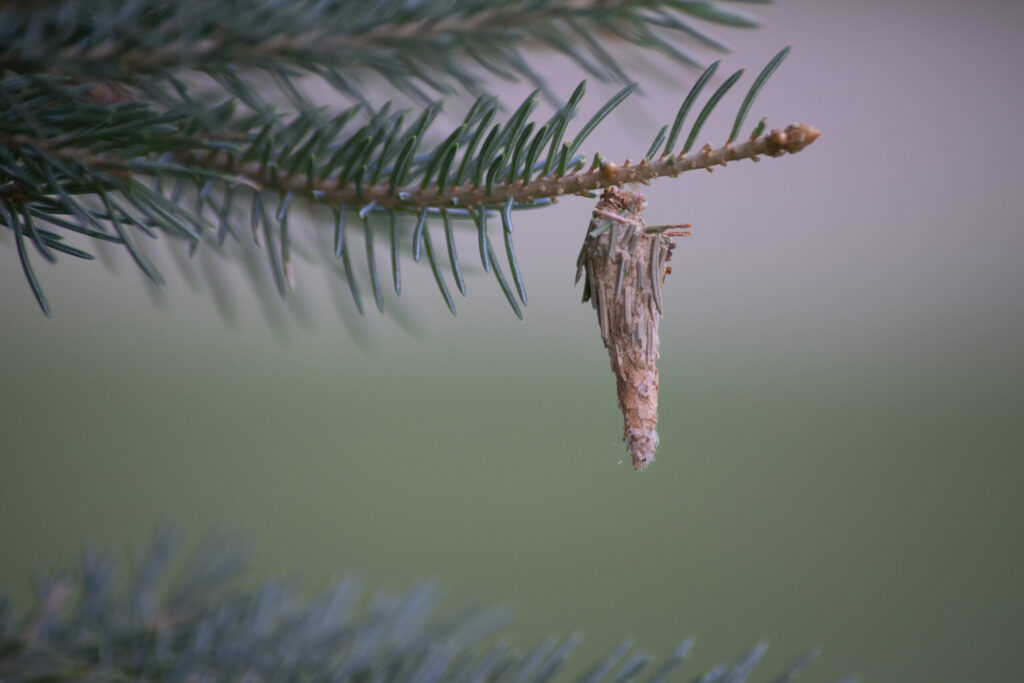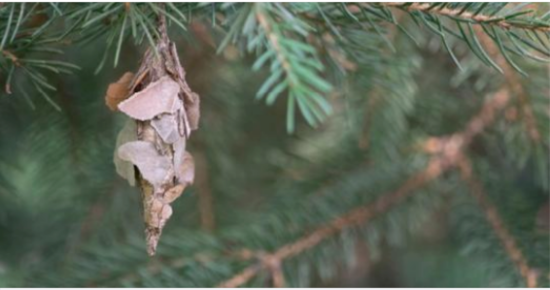Even though their name implies that they are innocuous, Evergreen Bagworms can create serious issues.
These organisms are not worms, but rather larval moths, and they represent a major threat to both deciduous and evergreen trees, inflicting damage and even death if not removed.
Evergreen Bagworms, scientifically known as Thyridopteryx ephemeraeformis, get its name from the peculiar protective covering they form around themselves, which resembles a bag.
The larvae make these bags by creating a silk-like thread and attaching trash such as twigs and leaves to their body. This shell gradually becomes larger, providing concealment and shelter for the worms.

How long does an Evergreen Bagworm take to mature?
Within her casing, which remains affixed to the tree long after her death, the mature female adult initiates the reproductive cycle by depositing eggs. The eggs stay inside the casing all winter until they finally hatch into small larvae in late spring or early summer. And these larvae, having spun their own bags from their silk-like thread, began searching for a suitable tree to cling to.
These bags may start off tiny, but as the larvae grow, they gradually get larger and periodically emerge to acquire additional plant material for their casing. The larvae create new bags as they go through each stage.
After two weeks, the larvae become adult moths, with the little males flying out to find females to mate with.
Treatment for Evergreen Bagworms
Although they may not seem dangerous, evergreen bagworms may cause significant damage to plants by attacking the foliage and preventing it from absorbing nutrients. This makes the tree weaker and more vulnerable to various illnesses, which may finally cause the tree to die.
So how can you keep your trees healthy and prevent Evergreen Bagworm damage? You have a few choices to choose from, including:
- taking out the bagworms by hand;
- cutting down the impacted branches;
- promoting in your garden the presence of parasitic wasps and birds, two natural predators; and
- chemically managing the infestation using pesticides designed especially to target bagworms.
Evergreen Bagworm infestation may be prevented using strategies such as:
- Regularly examining trees, especially in the spring and summer when the larvae emerge, to find bagworms early on.
- Pruning trees and ensuring sufficient nutrition levels;
- Remove bagworms.
- To limit the likelihood of bagworm infestation, maintain correct spacing between trees.
- Keep an eye on surrounding trees and plants, especially since bagworms can move from one to another.
What is the lesson to be learned? Evergreen Bagworms may cause a lot of harm, even though they aren’t extremely threatening or noticeable. Check on your trees and plants on a regular basis, and be mindful of the damage they might do.
What did you think about the article? Was it beneficial to you? Let us know!








Leave a Comment